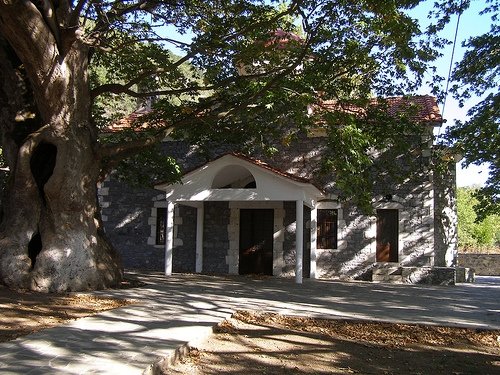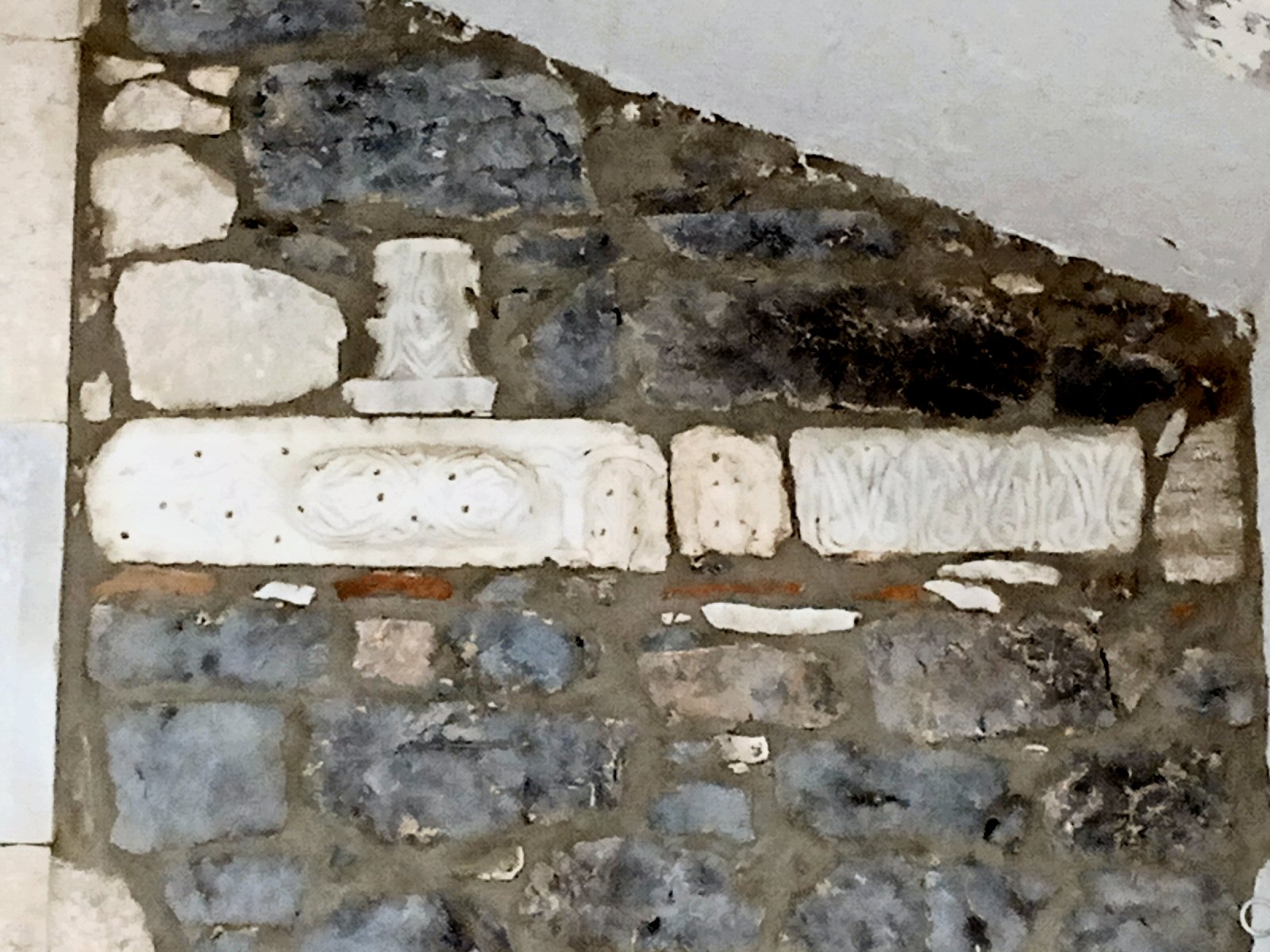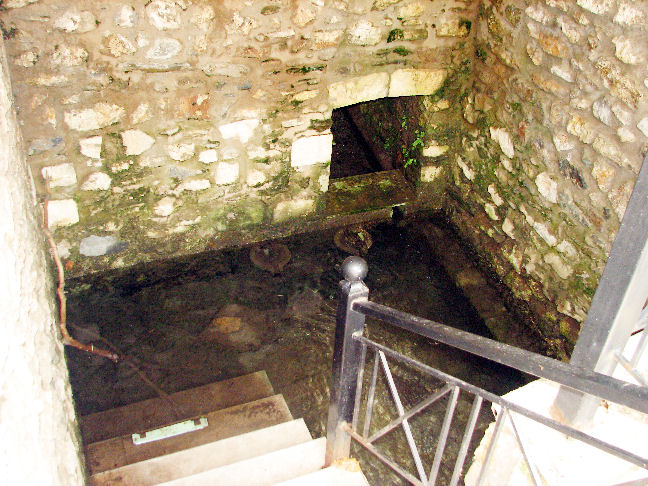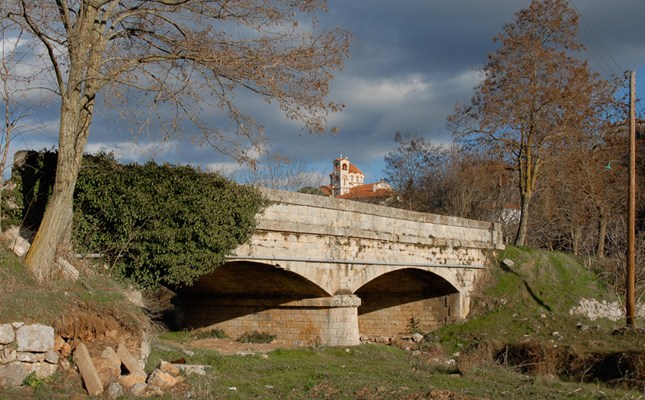Panagia - Menelaus Planes
Church of Assumption (Panagia)
The Church of Assumption, or else known to the inhabitants as "Panagia", was built in 1900 and it is located on the North-East end of the village, at 500m from the central square on the road to Agios Petros Kinourias. According to historical evidence, this site is determined to be the place where was the "Santuary of Artemis", with the statue of Caryatid Artemis and its priestesses called Caryatids.
In 1960, with the donation of Andreas G. Lambrakis and money from the heritage Panayiotis G. Karygiannis, the exterior enclosure was embellished with the construction of the concrete corridors.
In 2001, the temple was removed from the temple in order to reveal the beautiful stonework in which marble sections of archaic temples, possibly coming from the same ancient temple at that site, can be seen. From testimonies of residents that worked building the temple, these architectural parts were found during the excavation of the temple's foundation.
Then all the courtyard space was paved, the perimeter walls were dressed with stone and lighting was installed on the plane trees, but also at the water spring.
Menelaus Centenarian Planes
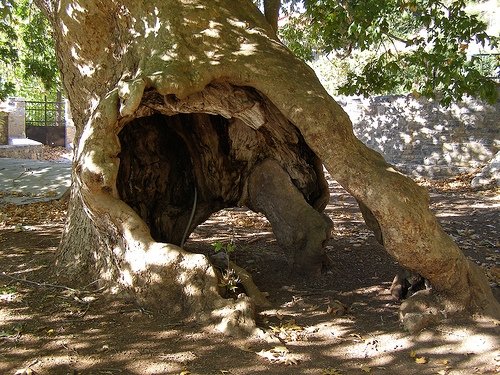 \In the temples yard there are four planes, well known as “Menelaus Centenarian Planes”, where three of them are in front of the temple and one behind it. Their age cannot be determined with accuracy, but according to Pausanias they were planted by Menelaus in 1100 B.C. and for this reason they got this name. Characteristic of trees is that their trunks are emptying to an extent that someone can enter into the trunks' gaps and climb comfortably at higher points of trees.
\In the temples yard there are four planes, well known as “Menelaus Centenarian Planes”, where three of them are in front of the temple and one behind it. Their age cannot be determined with accuracy, but according to Pausanias they were planted by Menelaus in 1100 B.C. and for this reason they got this name. Characteristic of trees is that their trunks are emptying to an extent that someone can enter into the trunks' gaps and climb comfortably at higher points of trees.
Panagia’s Spring
On the left side of the temple's yard gate, there is the "Pigi Panagias" (Panagia's spring), which used to provide to the inhabitants all the drinking water, along with the Sakali's spring. The real point of the spring source is located almost under the Church and the water is driven by a small stream at an accessible point for visitors. Characteristic of the spring is the fact that its hydrants are accessible only during the summer months as at the winter and spring months, the space is flooded with abundant water source. After the completion of Karyes' aqueduct, the inhabitants built there a well and with the force of a pump they use this water for irrigation purposes.
Arched Stone-Bridge of Deiros River
The elegant arched bridge in Karyes was built in 1886 by Italian stonemasons and connects the main settlement with in the district "Pinigoura". The bridge was originally designed to cover the proposed road which would act as a link between Athens and Sparta. Since it was going to be a main road with the expected traffic, it deemed necessary to build a bridge to maintain the level of the roadway. It is an excellent piece of that era's architecture and impresses with both its length, but mainly by its width. It consists of two arches under which passes the river Deiros or Panagia's river coming from the direction of the church of Assumption (Panagia).
During its construction, a large amount of soil was transferred with the aid of horses and carts and it was placed on both sides of the river to provide adequate support to the main structure of the bridge. Although the proposed road link between Athens and Sparta never accomplished, the bridge has served Karyes and other villages of mountain Parnon for over 116 years.


















